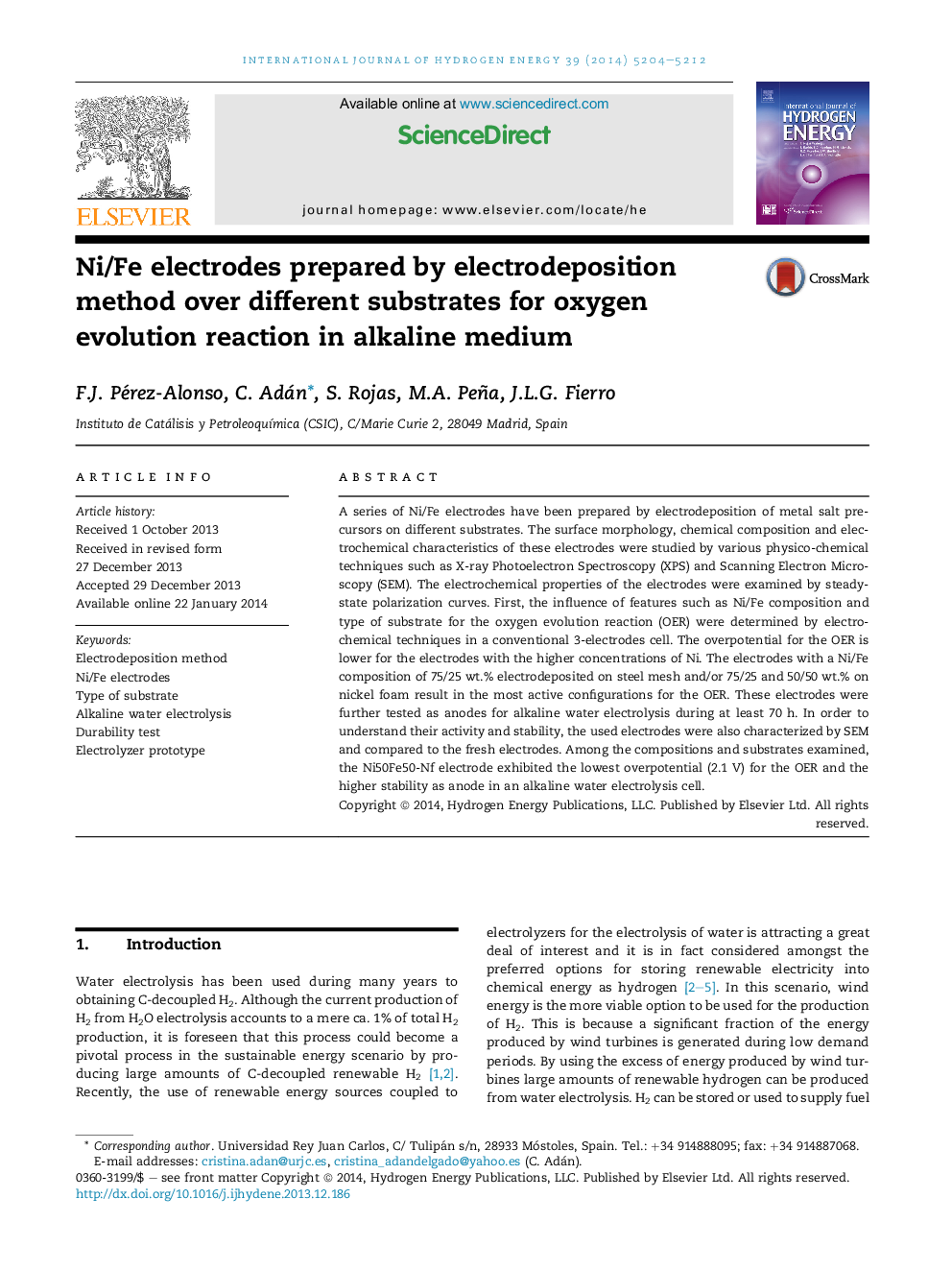| Article ID | Journal | Published Year | Pages | File Type |
|---|---|---|---|---|
| 1281291 | International Journal of Hydrogen Energy | 2014 | 9 Pages |
•Ni/Fe-based electrodes were prepared by electrodeposition over different substrates.•Ni/Fe layers decreases overpotential towards OER with respect to bare substrates.•Ni/Fe electrodes over nickel foam and stainless steel mesh show the best results.
A series of Ni/Fe electrodes have been prepared by electrodeposition of metal salt precursors on different substrates. The surface morphology, chemical composition and electrochemical characteristics of these electrodes were studied by various physico-chemical techniques such as X-ray Photoelectron Spectroscopy (XPS) and Scanning Electron Microscopy (SEM). The electrochemical properties of the electrodes were examined by steady-state polarization curves. First, the influence of features such as Ni/Fe composition and type of substrate for the oxygen evolution reaction (OER) were determined by electrochemical techniques in a conventional 3-electrodes cell. The overpotential for the OER is lower for the electrodes with the higher concentrations of Ni. The electrodes with a Ni/Fe composition of 75/25 wt.% electrodeposited on steel mesh and/or 75/25 and 50/50 wt.% on nickel foam result in the most active configurations for the OER. These electrodes were further tested as anodes for alkaline water electrolysis during at least 70 h. In order to understand their activity and stability, the used electrodes were also characterized by SEM and compared to the fresh electrodes. Among the compositions and substrates examined, the Ni50Fe50-Nf electrode exhibited the lowest overpotential (2.1 V) for the OER and the higher stability as anode in an alkaline water electrolysis cell.
Graphical abstractFigure optionsDownload full-size imageDownload as PowerPoint slide
